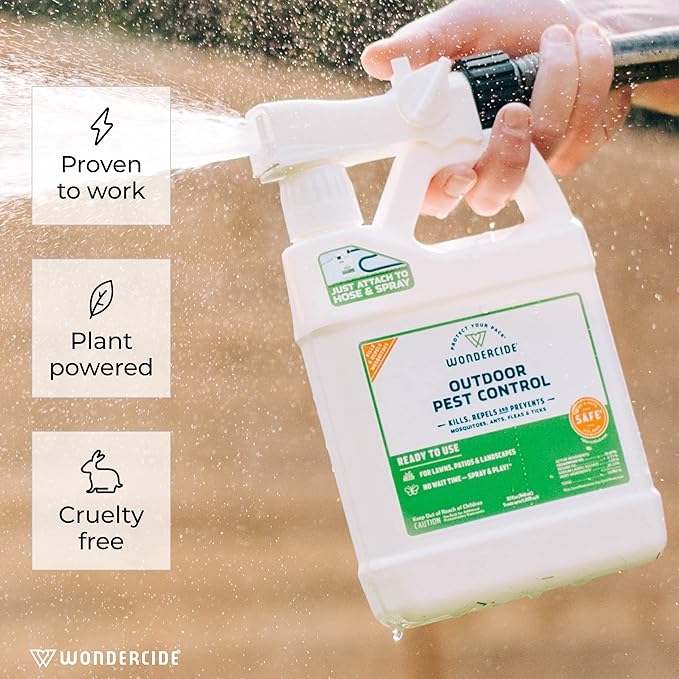
Key Organic Pest Control Techniques
Share
Key Organic Pest Control Techniques
1. Companion Planting
- What It Is: Planting specific crops together to repel pests or attract beneficial insects.
- How It Works: Certain plants emit odors or chemicals that deter pests, while others attract predators like ladybugs or lacewings.
-
Examples:
- Marigolds with tomatoes to repel nematodes and aphids.
- Basil near peppers to deter whiteflies.
- Nasturtiums as trap crops to lure aphids away from vegetables.
-
Benefits:
- Reduces pest damage by up to 60% in some studies.
- Enhances biodiversity and pollination.
-
Implementation:
- Source organic marigold, basil, or nasturtium seeds on Shopee PH.
- Plant in strategic patterns (e.g., intersperse marigolds every 3-4 vegetable plants).
- Tip: Check Shopee PH for organic seed packs to start companion planting.
2. Beneficial Insects
- What It Is: Introducing or attracting natural predators to control pest populations.
- How It Works: Ladybugs, lacewings, and predatory wasps eat pests like aphids, caterpillars, and whiteflies.
-
Examples:
- Release ladybugs (1,500 can cover a small garden) to control aphids.
- Attract hoverflies with dill or fennel to target soft-bodied pests.
-
Benefits:
- Reduces pest populations naturally without chemicals.
- Supports ecosystem balance.
-
Implementation:
- Purchase live ladybugs or lacewing eggs from trusted suppliers (check Shopee PH for local availability).
- Plant nectar-rich flowers like yarrow or cosmos to attract beneficial insects.
- Tip: Use insect hotels (available on Shopee PH) to provide shelter for beneficial insects.
3. Organic Sprays and Repellents
- What It Is: Using natural, plant-based, or mineral sprays to repel or kill pests.
- How It Works: Ingredients like neem oil, garlic, or soap disrupt pest behavior or physiology.
-
Examples:
- Neem Oil: Dilute 1-2 tsp per liter of water to spray on leaves; repels aphids, spider mites, and whiteflies.
- Garlic Spray: Blend 2-3 garlic cloves with water, strain, and spray to deter beetles and caterpillars.
- Soap Spray: Mix 1 tbsp mild liquid soap (castile) per liter of water to suffocate soft-bodied pests.
-
Benefits:
- Safe for plants, humans, and pets when used correctly.
- Effective against a wide range of pests.
-
Implementation:
- Source organic neem oil or castile soap on Shopee PH.
- Apply sprays early morning or late evening to avoid harming beneficial insects.
- Tip: Always test sprays on a small plant area first. Look for organic pest control sprays on Shopee PH.
4. Physical Barriers
- What It Is: Using physical structures to prevent pests from reaching plants.
- How It Works: Barriers like netting or row covers block pests while allowing light and water through.
-
Examples:
- Floating row covers to protect crops from caterpillars or leafhoppers.
- Copper tape around plant stems to deter slugs and snails.
- Sticky traps for flying pests like whiteflies or fruit flies.
-
Benefits:
- Non-toxic and highly effective for specific pests.
- Reusable and cost-effective over time.
-
Implementation:
- Purchase lightweight row covers or copper tape on Shopee PH.
- Ensure barriers are secure but allow ventilation to prevent mold.
- Tip: Combine barriers with companion planting for added protection. Check Shopee PH for eco-friendly netting.
5. Cultural Practices
- What It Is: Adjusting gardening habits to reduce pest-friendly conditions.
- How It Works: Healthy plants and clean gardens are less attractive to pests.
-
Examples:
- Crop rotation to prevent soil-borne pests like root-knot nematodes.
- Regular pruning to improve air circulation and reduce fungal pests.
- Remove plant debris to eliminate pest breeding grounds.
-
Benefits:
- Strengthens plant resilience, reducing pest damage by up to 30%.
- Improves overall garden health.
-
Implementation:
- Use high-quality organic compost (available on Shopee PH) to boost plant vigor.
- Sanitize tools with alcohol to prevent disease spread.
- Tip: Invest in ergonomic pruning shears on Shopee PH for efficient maintenance.
6. Trap Cropping
- What It Is: Planting sacrificial crops to lure pests away from main crops.
- How It Works: Pests are drawn to more attractive plants, sparing valuable crops.
-
Examples:
- Plant mustard greens to attract caterpillars away from cabbage.
- Use sunflowers to draw aphids away from tomatoes.
-
Benefits:
- Reduces damage to primary crops without chemicals.
- Can double as a harvestable crop.
-
Implementation:
- Source trap crop seeds like mustard or sunflowers on Shopee PH.
- Plant trap crops on garden edges or in rows between main crops.
- Tip: Monitor trap crops regularly and remove infested plants to prevent pest spread.
Practical Tips for Organic Pest Control
- Monitor Regularly: Inspect plants weekly for early signs of pests (e.g., chewed leaves, sticky residue).
- Combine Methods: Use a mix of companion planting, barriers, and sprays for comprehensive control.
- Eco-Friendly Products: Source organic pest control supplies like neem oil, row covers, or insect hotels on Shopee PH.
- Stay Informed: Follow gardening communities on X for real-time pest control tips and trends.
- Test Soil and Plants: Use soil test kits (available on Shopee PH) to ensure plants are healthy and less pest-prone.
